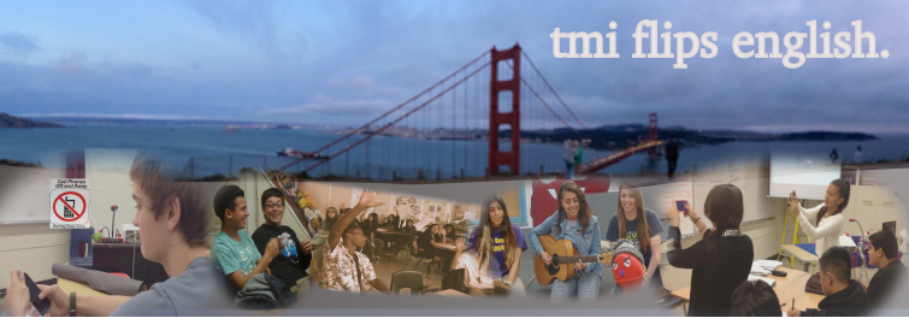Now, I always have had decent classroom management and my lessons are generally engaging, and when they aren't, my personality and persona carry me through. But in a flipped classroom, I find that my students don't need me to motivate them to shut up and sit still. Some need help staying on task and finding their own motivation to do their work, but there is high engagement.
There are lots of reasons for this, but let me give you two reasons that I think they've stopped fighting and learned to love the flip:
1. They are using technology in a way that reminds them of their own personal technology habits and it subverts their need to text, tweet, Facebook, etc. They are learning using in their primary mode of communication and it gives them the freedom and confidence to take risks. It's a little like being at home with their phone learning about their friends dinners or bathroom tendencies on Twitter...but they're learning about English instead.
2. They can listen to music while working. People of my generation don't all have the ability to work while listening to headphones (or slapping, as my kids say). But my kids barely function WITHOUT their music. When I give instructions they can't wear them. But concentration goes up when I don't fight their need for music.
I am going to try to convince you that you should allow and utilise personal electronics in your classroom, not because it's easier, but because it helps them learn and it gives them the access to the tools they already have to teach themselves.
Here are some ways to use personal electronics in your classroom:
--> backchannels for live discussion during a novel or movie. A twitter environment makes no comment or question too insignificant
--> socrative, group texting services, or SMS for quick-checks for understanding, exit tickets, and warm-ups
--> using music to keep them focused on solitary tasks. With headphones in, they will stay on task more easily than without
--> taking video of lectures, discussions or instructions on their own devices during class so they can review it whenever
--> using camera phones to capture notes, info on boards, or to create a response to a topic in pictures
--> to keep track of assignments with a calendar (ideally synched with yours)
--> enhance learning by finding information or videos that relate to the class work and show them to classmates
--> to connect with students across periods, classes, subjects, schools, and even countries. My kids are using Edmodo and Twitter to write and share stories with an Australian class.
If you have more that I missed, let me know!
Anyone, but particularly an educator, who believes that you can ignore the culture our students are engaged in and helping to create is a fool. You can't fight this. But you can choose to accept it and learn from and with your students.
You will be amazed at the changes that happen in your room.


 RSS Feed
RSS Feed
